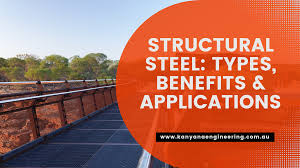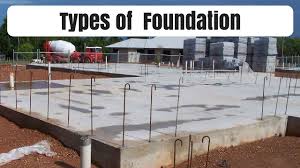“10 Surprising Facts About the Elizabeth Line: Civil Engineering Project in Europe (London)”

Introduction
- Overview: The Crossrail, now known as the Elizabeth Line, is a monumental achievement in London’s transport history.
- Importance: This infrastructure project revolutionizes travel across London and beyond.
- Expectations: Discover 10 surprising facts about the Elizabeth Line that even seasoned Londoners might not know.
1. The Elizabeth Line Is Europe’s Largest Infrastructure Project
- Scale:
- The Elizabeth Line spans 118 kilometers (73 miles).
- It connects Reading and Heathrow in the west with Shenfield and Abbey Wood in the east.
- Engineering Prowess:
- Required thousands of engineers, architects, and workers.
- Involved digging over 42 kilometers (26 miles) of new tunnels beneath London.
- Comparison:
- Europe’s largest infrastructure project.
- Bigger than the Channel Tunnel and Berlin Brandenburg Airport in scope and impact.
2. The Elizabeth Line Took Over a Decade to Complete
- Timeline:
- Originally announced in 2007.
- Numerous hurdles arose, including technological limitations and financial limits.
- COVID-19 pandemic added further delays.
- Challenges:
- Delays in crucial components like signaling systems.
- Financial and logistical hurdles extended the timeline.
- Public Perception:
- Mixed reactions; some frustration but also appreciation for the complexity.
- Now operational, focus shifts to its benefits rather than delays.
3. Over 42 km of New Tunnels Were Dug Beneath London
- Engineering Feat:
- Over 42 kilometers (26 miles) of tunnels were excavated.
- Tunneling in a dense urban environment required precision and innovation.
- Tunnel Boring Machines (TBMs):
- Massive machines used to dig and lay tunnel segments.
- Each TBM was named after a famous historical figure.
- Safety and Navigation:
- Tunnels carefully routed to avoid existing infrastructure.
- Advanced monitoring systems ensured stability and safety.
4. Civil Engineering Project in Europe (London) – The Elizabeth Line Serves Over 40 Stations
- Route:
- Connects more than 40 stations across London and its outskirts.
- Includes newly constructed and upgraded existing stations.
- Architectural Marvels:
- New stations feature modern design and amenities.
- Example: Canary Wharf station’s striking timber lattice roof.
- Accessibility:
- All stations equipped with step-free access.
- User-friendly features like tactile paving and audio-visual systems.
5. The Elizabeth Line Significantly Reduces Travel Time
- Time Savings:
- Heathrow Airport to Canary Wharf: Reduced from over an hour to 38 minutes.
- Paddington to Liverpool Street: Reduced from 18 minutes to 10 minutes.
- Impact:
- Saves valuable time for commuters.
- Enhances productivity for businesses.
- Reliability:
- Dedicated tracks and state-of-the-art trains reduce delays.
- Offers a more dependable alternative to other transport options.
6. The Elizabeth Line Is Expected to Carry 200 Million Passengers Annually
- Passenger Numbers:
- Estimated 200 million passengers annually.
- Reflects the line’s importance in London’s transport network.
- Congestion Relief:
- Helps distribute passenger loads more evenly.
- Reduces strain on overcrowded lines like the Central and Jubilee lines.
- Future Planning:
- Supports London’s growing population and transport demands.
- Ensures the city remains connected and accessible.
7. The Elizabeth Line Was Renamed in Honor of Queen Elizabeth II
- Renaming:
- Originally called Crossrail; renamed Elizabeth Line in 2016.
- Name change announced by Queen Elizabeth II at Bond Street station.
- Significance:
- Reflects the Queen’s association with London.
- First major transport project in London named after a reigning monarch.
- Public Reaction:
- Largely positive; seen as a fitting tribute.
- Adds prestige and significance to the line.
8. The Elizabeth Line’s Rolling Stock Is State-of-the-Art
- Class 345 Trains:
- Specifically designed for the Elizabeth Line.
- Spacious, modern design with nine carriages per train.
- Passenger Comfort:
- Features air conditioning, large windows, and ample seating.
- Step-free access, wide doors, and wheelchair spaces.
- Energy Efficiency:
- Regenerative braking systems reduce energy consumption.
- Aligns with London’s green transport goals.
9. The Elizabeth Line Contributes to London’s Green Transport Goals
- Environmental Benefits:
- Reduces emissions by encouraging public transport over car travel.
- Lessens the number of vehicles on the road, improving air quality.
- Energy-Saving Technologies:
- Regenerative braking and energy-efficient lighting.
- Reduces the line’s overall carbon footprint.
- Sustainable Construction:
- Use of environmentally friendly materials and practices.
- Efforts made to reuse and recycle materials during construction.
10. The Elizabeth Line Was a Financially Complex Project
- Budget:
- Total budget exceeded £18 billion.
- Funded by UK government, Transport for London (TfL), and private sector.
- Financial Challenges:
- Faced cost overruns and the need for additional funding.
- Managed to secure necessary funding despite financial hurdles.
- Economic Impact:
- Expected to generate significant economic benefits.
- Increased property values, higher productivity, and additional revenue.
Civil Engineering Project in Europe (London) – Conclusion
- Recap: The Elizabeth Line is a transformative project with a lasting impact on London.
- Significance: From reducing travel times to contributing to green goals, it’s a symbol of progress and innovation.
- Encouragement: Whether a daily commuter or a visitor, experience the Elizabeth Line for yourself – it’s more than just a train service, it’s a new era in London’s transport history.
Frequently Asked Questions (FAQs)
1. What is the Elizabeth Line (Crossrail)?
- The Elizabeth Line, originally known as Crossrail, is a major railway project in London, connecting the east and west sides of the city with 42 kilometers of new tunnels and over 40 stations.
2. Why was the Elizabeth Line renamed from Crossrail?
- The Elizabeth Line was renamed in honor of Queen Elizabeth II in 2016 to reflect her long-standing association with London. It’s the first major transport project in London named after a reigning monarch.
3. When did the Elizabeth Line officially open?
- The Elizabeth Line officially opened to passengers in May 2022, after facing several delays during its construction.
4. How does the Elizabeth Line improve travel times in London?
- The Elizabeth Line significantly reduces travel times across London, for example, cutting the journey from Heathrow Airport to Canary Wharf to just 38 minutes.
5. How many people are expected to use the Elizabeth Line each year?
- The Elizabeth Line is expected to carry around 200 million passengers annually, highlighting its importance in London’s transport network.
6. What are the key features of the trains used on the Elizabeth Line?
- The Elizabeth Line’s trains, known as Class 345, feature spacious interiors, air conditioning, step-free access, and energy-efficient technology like regenerative braking.
7. How did the construction of the Elizabeth Line affect London?
- The construction involved extensive tunneling beneath London, careful routing to avoid existing infrastructure, and the creation of new stations, significantly transforming the city’s transport landscape.
8. What stations does the Elizabeth Line connect?
- The Elizabeth Line connects major stations across London, including Paddington, Liverpool Street, Canary Wharf, and extends out to Reading and Heathrow in the west, and Shenfield and Abbey Wood in the east.
9. How does the Elizabeth Line contribute to London’s sustainability goals?
- The Elizabeth Line supports London’s green transport goals by reducing emissions through energy-efficient technologies and encouraging public transport use over car travel.
10. What was the total cost of the Elizabeth Line project?
- The Elizabeth Line project had a budget exceeding £18 billion, making it one of the most expensive infrastructure projects in the UK.
11. What were the major challenges faced during the construction of the Elizabeth Line?
- Major challenges included technical difficulties with signaling systems, financial constraints, and delays caused by the COVID-19 pandemic.
12. How does the Elizabeth Line impact London’s economy?
- The Elizabeth Line is expected to boost London’s economy by increasing property values, enhancing productivity, and generating additional revenue from passenger fares.
13. Is the Elizabeth Line fully accessible for people with disabilities?
- Yes, the Elizabeth Line is fully accessible with step-free access, wide doors, and dedicated spaces for wheelchair users at all stations.
14. What role did Tunnel Boring Machines (TBMs) play in constructing the Elizabeth Line?
- Tunnel Boring Machines were crucial in excavating over 42 kilometers of tunnels beneath London, ensuring precision and safety during construction.
15. What is the future of the Elizabeth Line?
- The Elizabeth Line is set to play a central role in London’s transport network, accommodating the city’s growing population and evolving transport needs for years to come.
If you want to get more knowledge about this so read more.
If you want more articles about Civil Engineering click on link.




